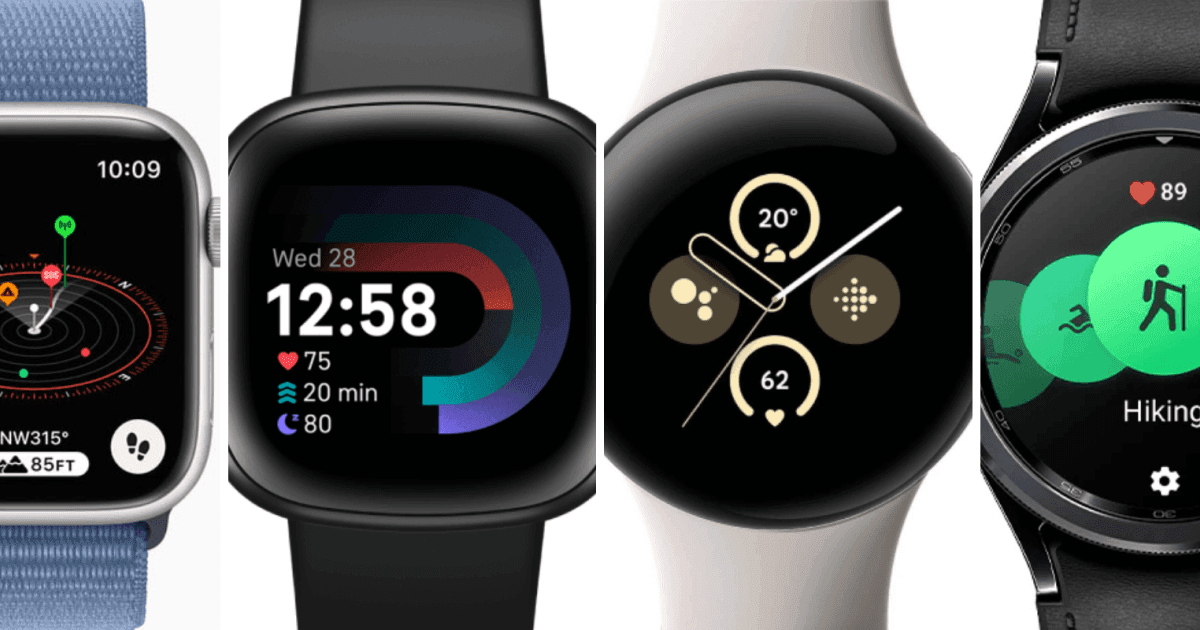Smartwatches are booming — so what is it that entices us to buy them and what is it that we rely so heavily on?

Written by Yasmin Maagbe, Content and PR Executive | Environment and Consumer Electronics
Last updated on 17 December 2025

There’s no doubt that smartwatches are a popular accessory, with over 208 million units expected to be shipped by 2028, there is definitely a demand for this little accessory. So what is it that entices us to continue to buy them and what is it that we rely so heavily on? We dive into what sort of person is best suited to a smartwatch in terms of lifestyle, needs, budget and interests as well as the brands that are dominating the market right now. Keep reading if you want to know what to consider when buying a smartwatch and whether or not it’s the right fit for you.
When most people look to invest in a new tech gadget, there are a few key things that may sway their decision. Number one is definitely what impact they have had on social media and everyday life. If you’re online or out and about and you are constantly seeing people wearing the latest Apple Watch, then of course you will be more inclined to purchase one. Owning a wearable that has such an impact can often become a status symbol and allude to one being a tech savvy person even when this isn’t the case.
But surely there must be other factors I hear you say! Of course, this is just a small part of what increases popularity for certain wearable devices and there are other key drivers of popularity; convenience, connectivity, fitness tracking and payment options. When you engage with a person who wears their smartwatch religiously, you’ll usually hear them talk about how many steps they’ve managed to do and this is because most smartwatches are able to track your movement throughout the day and even monitor how many calories you’ve burned during your workout. When we asked our team at Compare and Recycle why they own or want to own a smartwatch, the majority said that they want to track their steps/fitness more than anything which was actually pretty surprising. We thought that the appeal was the convenience of being able to call, text or make payments, but it seems lifestyle culture trumps. Fitbit is one of the most popular wearable devices for fitness tracking with Apple Watches surpassing them in popularity. Another popular feature is whether or not you can rely on it to stay connected to your family and friends via social media, traditional text messaging and even payments. This is great for those who may not want to constantly get their phone out to answer calls or respond to text whilst on their commute to work or school.
First things first, decide on your budget. Most wearables exceed the £100 mark and depending on what features you are looking for, the price will vary. For example, you’ll be able to get the Fitbit Versa 4 Smartwatch for around £150 and although this has limited apps, it’s still a great fitness focused smartwatch which we’ll get more into later in the blog. You should also figure out what your personal needs are and why you are wanting to buy a smartwatch. Is it for exercise and personal tracking or simply to use on the go? Whatever it is, you should figure this out first to avoid disappointment and money wasted.
Next, compare ecosystems. If you are a Google Pixel user and own all Android products, then purchasing an Apple Watch probably wouldn’t be your first choice. For example the Google Pixel Watch 2 works with phones running Android 9 or newer via the Google Pixel Watch app meaning that you will need a Google Account log in meaning some Android wearables are incompatible with iPhones. Plus, the UI and syncing with an Android phone will be less aesthetic mainly due to the fact that the iOS interface pairs with Apple devices more seamlessly and is designed for them rather than for Android wearables. Not only this, but research what the long term value is and find out how many software updates a particular smartwatch will have and also what warranty support is provided.
There’s no shock in saying that Apple, Samsung, Google and Fitbit collectively dominate the smartwatch market and all of them offer unique features. In terms of budget, technical specifications and design elements, there is something for everybody, so let’s dive in!
👍Better screen brightness for outside use
👍Double tap gestures improve one handed use
👍Battery life lasts a full day
👎Does not include blood pressure monitoring
👎Same design and colours as predecessor
The Apple Watch Series 9 provides an impressive 2000-nits display (the last generation included 1000-nits display) and is a great choice for those looking for lifestyle, fitness, health and safety and features. This powerful display will help with the visibility of the screen when outdoors without affecting the battery life. Of course it’s very compatible with the iPhone, all thanks to the new S9 SiC chipset because it powers on device Siri processing, directional device finding with the iPhone 15 lineup and the Double Tap feature allows you to operate your watch by using a simple pinching motion. So what this means is that Apple Watch Series 9 users are able to answer calls, set timers, play music and other tasks just by using a single hand gesture.
The sizes for this model is impressive as they offer two large screen sizes, 41mm and 45mm in both aluminium or stainless steel case. (Note that the stainless steel and cellular connectivity add-on will cost you more than the aluminium casing). Nonetheless, you’ll still be equipped with bluetooth, GPS, WiFi and Cellular connectivity.
👍Large screen
👍Good battery life
👍Fitness tracking is easy to read
👎Has less features and apps than Fitbit 2
👎No third party app support
👎Doesn’t have music playback
The Fitbit Versa 4 Fitness smartwatch is the perfect fitness focused wearable despite the fact that it has limited access to apps. The design keeps up with other competitors on the market with a slimmer case, a more responsive touch screen, physical button and not to mention 40 exercise modes which is an increase of 20 since the previous generation. It’s affordable, includes always-on display, has Alexa, Google Maps, Google Pay but does not support third-party app downloads which could be a deal breaker for some. It also doesn’t support ECG or stress sensor monitoring which some may rely on when working out. However, the good news is that it’s compatible with smartphones running at least Android 9 or iOS 15, so iPhone users we’ve got you covered. We would recommend those who enjoy working out or have an active lifestyle and just need a simple smartwatch to track their activities.
👍Faster processor
👍Heart rate and movement tracking
👍Lighter in weight than Pixel Watch
👎Does not support wireless charging
👎Not compatible with iOS
Another favourite is the Pixel Watch 2 which again is another great fit for fitness lovers mainly due to the fact that it offers full fitbit integration. This means you can expect it to monitor skin temperature and stress responses when moving or working out and track your progress each time. The Google Pixel Watch 2 runs on Google’s Wear OS operating system and supports the ability to make calls, send texts, make payments when you’re on the go and also provides smart home controls which is a bonus. However, because this watch runs on Android 9 or newer via the Google Pixel Watch app, it means that unfortunately it is not compatible with iPhone as you will need a Google account to log in.
👍Sleep insights
👍Sleek rotating bezel
👍It runs WearOS
👎Similar to Galaxy Watch 5
👎Not compatible with iOS
Next up we have the Samsung Galaxy Watch 6 Classic, so if you’re looking for a stylish smartwatch then this is for you. The Galaxy Watch 6 Classic has a sleek rotating bezel which is one of the main things that differentiates it from the regular Galaxy Watch 6. This is a nice design touch but it also means that you can seamlessly scroll through apps, texts and more. On top of this, it includes sleep insights and skin temperature sensors, meaning that if you’re having trouble sleeping or just want to monitor your sleeping patterns, then this smartwatch could be a good fit for you. Not to mention that it’s also created with a stainless steel case and ‘eco-leather’ synthetic band. It runs Wear OS giving access to Google Maps, Play Store and other third-party apps. It’s also compatible with smartphones running Android 10 or higher with more than 1.5GB of RAM and once again, not compatible with iOS devices.
So there you have it! We hope that this blog has equipped you with everything you need to know about whether or not you should purchase a smartwatch and if so, what you should look out for. It's super important that you consider what it is you expect from your smartwatch and look at your lifestyle preferences before committing to buying one.

The iPhone used to define innovation. Now every new model feels the same. Is Apple’s story running out of pages?

See which Apple, Samsung and Google phones hold their value best over the first and second year on the market.
With Pixels becoming a decent contender for your upgrade choice, we’ve crunched the numbers to reveal depreciation patterns of Google Pixel phones.